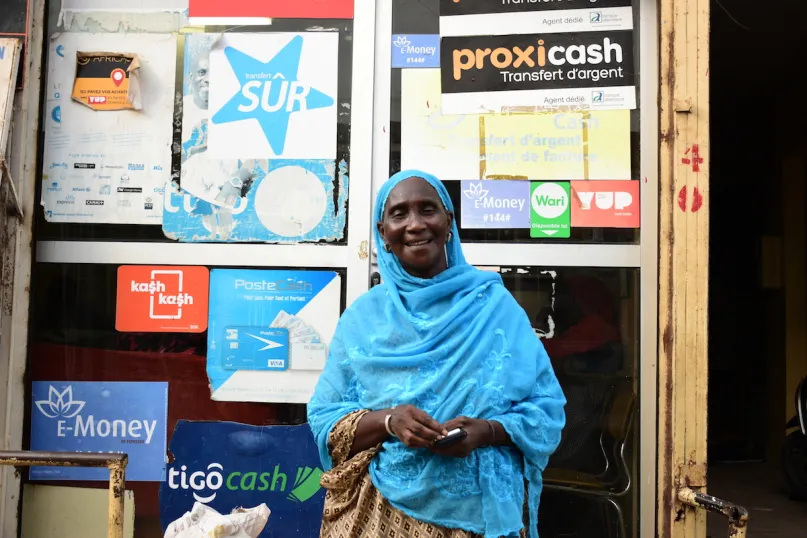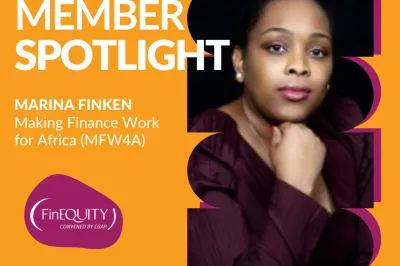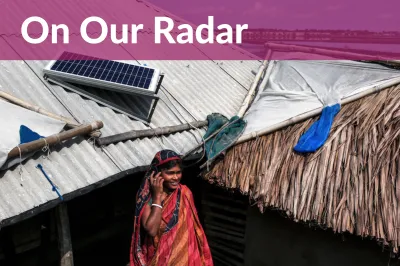How Can We Design Consumer Protection That Builds Women’s Trust?

Consumer protection presents a significant challenge for financial inclusion. The Global Findex 2021 data highlights that 23% of unbanked adults globally do not trust the financial system, and 48% of adults in low- and middle-income countries with inactive accounts do not use their accounts because of a lack of trust in the financial system.
Women comprise 54% of all unbanked adults and face barriers to account ownership for a host of reasons, including a lack of trust in the financial system. Beyond trust, many consumers struggle to participate in the financial system independently. In Sub-Saharan Africa, one-third of mobile money account holders say they could not use their mobile money account without help from a family member or an agent – with women 5 percentage points more likely than men to need help using their accounts. Given these challenges, gender-intelligent consumer protection has become increasingly important for women across the globe.
What is gender-intelligent consumer protection?
Gender-intelligent consumer protection includes the laws, regulations, business practices, and information that enable women to use financial services safely and responsibly. In essence, this speaks to women’s trust in the system, which is needed to achieve their financial goals and enhance their well-being.
Over the last year, FinEquity has hosted a series of ‘Design in Action’ webinars, drawing on resources profiled in the FinEquity Knowledge Guide on Incorporating Gender-Intelligent Design in Financial Services. FinEquity held the final webinar in this series on gender-intelligent consumer protection in May 2023. The conversation drew on insights from Juan Carlos Izaguirre of CGAP, Sheila Senfuma of Consumers International, and Rose Mpofu of the Consumer Council of Zimbabwe, who explored the unique consumer protection challenges that women face and how gender-intelligent design can address these challenges moving forward.
The evolving challenges facing women consumers
Keeping in front of FinTech (the use of technology to enable financial services) is an enormous challenge, as every month we see an increasing number and complexity of products and services enter the market. Regulation struggles to keep up with this rapidly changing landscape and to keep women consumers safe in their financial lives. Consumers International has detailed four broad types of risk for women: fraud, data misuse, lack of transparency, and inadequate redress mechanisms.
In Zimbabwe, for example, while the gender gap decreased to 12% in 2021, Rose Mpofu notes that digital financial literacy remains a key issue. Women lack adequate information to learn how to use financial services independently, and so prefer visiting a physical branch or an agent, where they feel a greater sense of trust in the system. However, this poses an immense challenge for women in rural areas where access is far more challenging, and outreach – including appropriate and digestible information – must be improved. Another challenge for women in rural areas is the lack of choice of financial service providers. The rural business case is harder for providers to crack, and the costs of doing business are higher. And without choice, there is no competition. This means both higher fees and less urgency to provide information about services beyond marketing efforts alone.
Similar challenges were seen in CGAP research conducted in Cote d’Ivoire. Women were found to be more likely to have difficulties navigating a digital financial services (DFS) menu (8 percentage points) and understanding a DFS offer (4 percentage points). From a recourse perspective, not only were women less likely to contact the provider if there was a problem (10 percentage points) and to know how to do this (5 percentage points) but alarmingly, agents were also 9 percentage points less likely to act on a woman’s complaint.
How can we address consumer protection challenges with gender-intelligent design?
Six key actions may be considered to use a gender-intelligent design approach to women’s consumer protection:
Ensure appropriate, audience-specific, and digestible information. Obvious or not, financial service providers need to meet women where they are. Information about financial products and services needs to be tailored to address how they are using these services – and through suitable customer channels. This means considering elements such as access, literacy, social norms, and mobile phone ownership. If this information is not presented to the customer in an appropriate way, they cannot be expected to read it.
Monitor gender-based risks. As highlighted in the figure below, CGAP research found that tools such as analysis of regulatory reports, complaints data, consumer contracts, thematic reviews, mystery shopping, phone surveys, and financial user diaries are all useful in identifying and tracking risks that disparately affect women’s use of digital financial services.

Build stronger capability around gender-intelligent analytics. In-house expertise and knowledge of women’s use of financial services will build the business case for serving women and an understanding of the challenges that women face. This, of course, is largely driven by data: not only do providers and regulators need to collect sex-disaggregated data, but they need in-house expertise to analyze and understand what that data is telling them.
Improve monitoring of customer outcomes. Juan Carlos Izaguirre highlighted the importance of understanding how specific actions to improve consumer protection (e.g., agent training and new approaches to customer information) are influencing women’s behaviors, experiences, and results vis-à-vis financial services. This functionality necessitates defining, disaggregating, and segmenting data streams from the start. When customer databases and financial accounting are linked, financial service providers can run more precise analytics and establish a data-driven understanding of women’s use of their products and services.
Establish regulator/ecosystem monitoring. Sheila Senfuma noted the importance of monitoring the impact or effect of regulations on women, as in some cases where financial consumer protection laws can be overshadowed by social and cultural norms.
Balance innovation with regulation. The hectic speed of FinTech is not slowing any time soon – a tall order for regulators trying to keep up and protect women users of digital financial services. This can be improved by setting up a responsible finance ecosystem where all key partners engage in more effective collaboration, capacity building, and customer centricity.
These shifts in the financial services landscape will be critical to improving women’s trust in the financial system as a whole and to ensuring that digital financial services are, as Sheila Senfuma rightly points out, inclusive, safe, data-protected, private, and sustainable for women.


